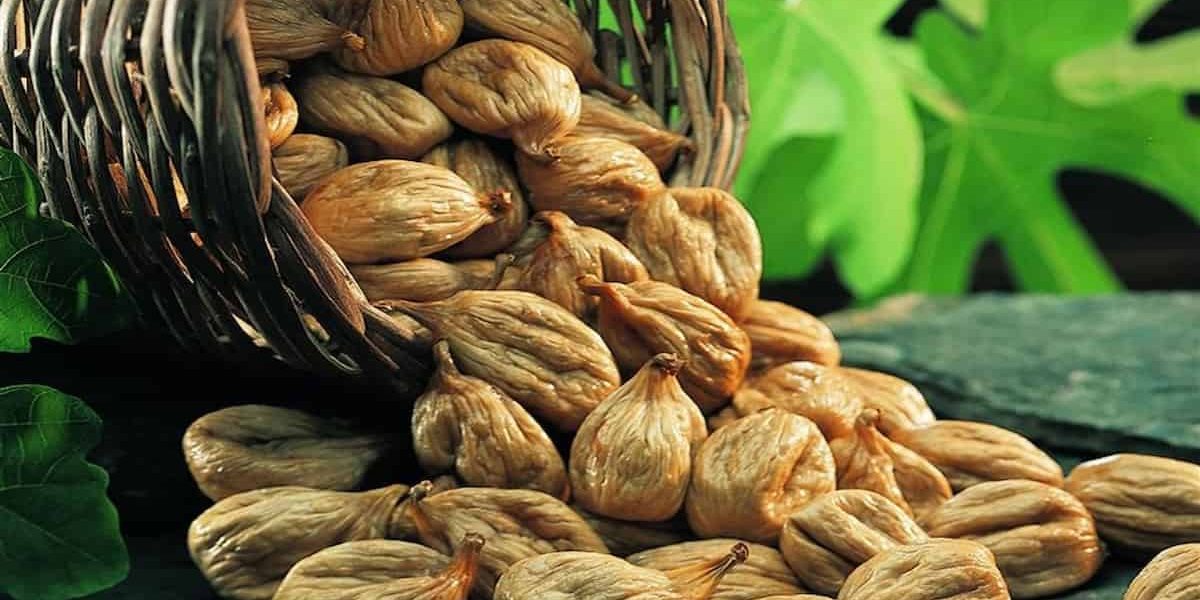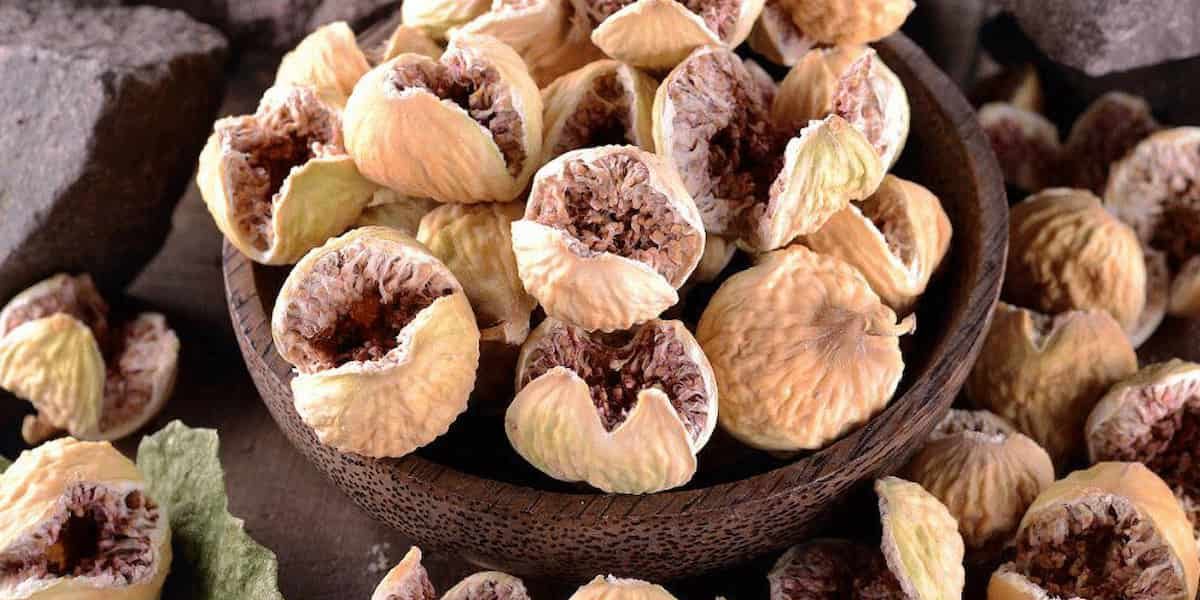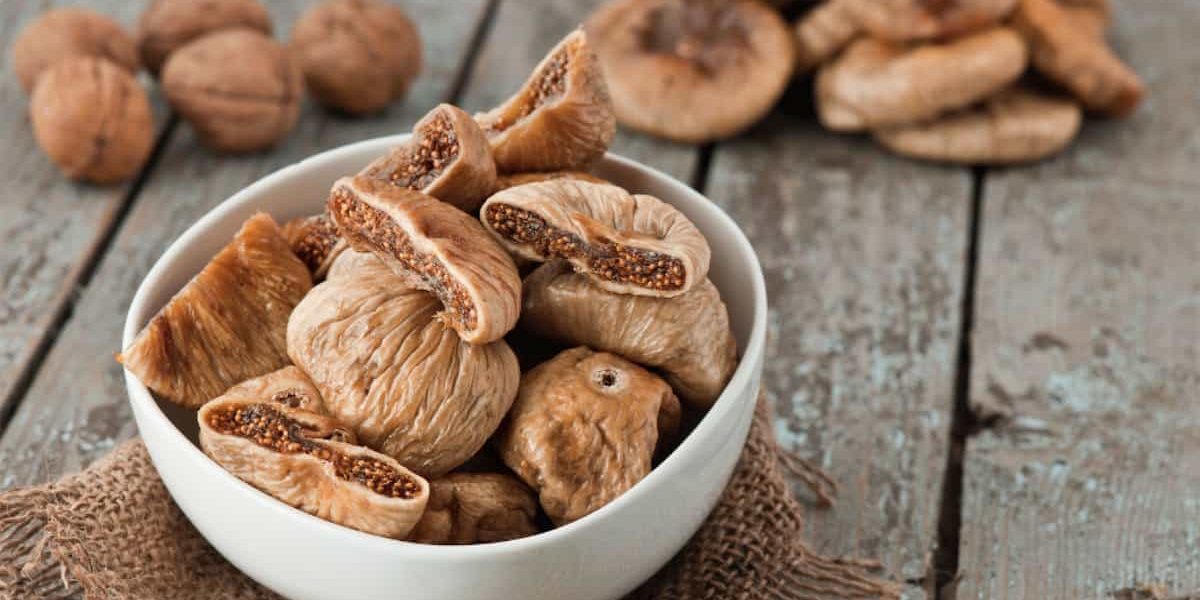Dried figs are a good source of calcium, potassium, and fiber. Having this tasty dried fruit on hand lets you extend the fig season and make more recipes with figs. Follow this guide to learn different easy ways to dry fresh figs. Why should figs be dried? Fresh, ripe figs have a short shelf life. After about five days, they are often no longer good to eat. By drying your figs, you can keep these soft fruits fresh longer and get several other benefits as well. Here are three reasons why drying figs is a good way to keep them: 1. Longer shelf life: If you dry figs, they can last for several months longer. Dried figs can be kept for up to a year, but fresh figs only last for two to three days. 2. High in nutrients: Dried figs have more fiber per serving than fresh figs, which is why they are often used to treat digestive problems. Dried figs also have more phenolic compounds and antioxidants than fresh figs, which may help protect cells from damage. 3. They can be used for many things. Dried figs have a chewy texture and a sweet fruit taste, which makes them great for snacks and cooking. You can add dried figs to a salad or eat them as a snack. Soak the figs in water for a while to make them plumper before adding them to fig jam or fig ice cream.
Dehydrate figs in the oven
If you dry figs in the oven, they will retain their freshness for a longer period. Follow these steps to bring dried figs back to life in the oven: 1. To preheat the oven, turn the temperature dial to its lowest setting, which should be at or below 140 degrees Fahrenheit. 2. Clean and cut the figs by first rinsing them under cold water, then allowing them to drain in a strainer, and finally drying them with a paper towel. Next, make an incision through the middle of each fig, all the way from the stem to the bottom. 3. When you are ready to put the figs in the oven, place them on a baking sheet lined with a cooling rack or a wire rack. in the oven, which had been heated up beforehand. Give each fig its place they do not come into contact with one another. Position the baking sheet so that it is in the center of the oven. After exposing the figs to the air for eight hours to dry, check on them at regular intervals. 4. Put it away in the proper manner: remove your dried fruit from the oven. Figs that have been dried out should be stored in an airtight container at room temperature. Dried figs have a shelf life that ranges anywhere from six to twelve months.
 Dried figs easy cookies recipe
Dried figs easy cookies recipe
Dehydrated figs in the air fryer
Dehydrating figs is a good way to keep them fresh, but you need a food dehydrator to do it. To dry out fresh figs at home, follow these steps. 1. Wash and dry: Run cold water over the figs to clean them. Use a paper towel to dry them off. 2. Blanch: Bring a pot of water to a boil. With a slotted spoon, drop the whole figs into the boiling water. About 30 seconds after the water starts to boil, take the figs out. Put them in a bowl of ice water to stop the cooking. Their skin and flesh will break down in the ice bath, which will help them lose water. 3. Cut vertically: From the stem to the blossom end, cut your figs in half vertically. If you want smaller, chewier pieces, cut your figs into quarters. 4. Set up: Put the figs in a single layer, skin side down, on your dehydrator tray. Don't put too many figs on the dehydrator tray at once. This can cause moisture to form and slow down the drying process. 5. Set your dehydrator to the fruit set, which is about 135 degrees Fahrenheit. Dehydrate for up to eight hours while keeping an eye on how they are doing. When the skins start to feel like leather, they are ready. 6. Cool and store: Put your freshly dried figs on a cooling rack so they can cool down. Once the figs have cooled, put them in a plastic bag or a mason jar with a lid to store them. Remove any extra air from the bag so that your dried figs don't get sealed with water.
How to dry figs naturally
Dried figs are a unique treat that is finally getting the attention they deserve. They have a chewy, soft, yet crunchy texture, a rich and earthy sweetness, and a versatile shape. This guide to dried figs tells you how to buy, store, and eat this interesting fruit. People who grew up in the 1980s and 1990s often had their first experience with figs in the form of Fig Newtons. The fruit, which was filled with a thick paste made of dried figs, wasn't liked as a whole food for another ten years. Even though Americans still didn't know much about fresh figs, this made it easy for dried figs to get into American homes. As long as people have liked to eat fresh figs, they have also liked to eat dried figs.
Since figs tree go bad quickly when they come off the tree, people have had to find ways to keep them fresh to make the most of their harvest. The oldest way to keep food fresh is to dry it in the sun. All you need is space and time; you don't need any special equipment or storage space. Most likely, the first dried figs were found by accident. They had already shrunk on the tree before being picked, but they were still good to eat. Modern processing is a lot more advanced. To make sure it is safe, it starts with a rinse of water and acid, which is often something as harmless as lemon juice. The fresh figs are then moved quickly through powerful wind tunnels to speed up the drying process and make sure that every batch has the same texture and taste. Some businesses do add sulfur dioxide or sulfates to their products to make them last longer. Sulfates are mineral salts that can be natural or made by humans. Some people are allergic to them, so read labels carefully if you want to avoid them.
Drying figs in a microwave
Anyone who grows figs and almonds but can't eat them all fresh can dry them to make a sweet, long-lasting dried fruit. But a few things must be taken into account for preservation to work. If not, the figs might be moldy or full of bugs. No matter if you use the sun, an oven, or a microwave, you need to be patient. Because it takes a while for the figs to dry. Figs are good for you because they are full of fiber and minerals. This is especially true of dried figs, which have more nutrients per gram than fresh ones because they have less water. Also, when they are dried, they last longer than dried fruits, so they can be used for a longer time. If there are figs left over that can't be eaten fresh, drying them is a good idea. But it's important to follow a few simple rules. The figs need to be dried the right way so that they last a long time and don't get mold. If you want to extend the shelf life, you can do so by following these simple rules: 1. Give yourself enough time. Drying in the oven and the sun takes hours or even days. 2. Turning the figs often: Even if the figs are on a grid, they should be turned often so that they dry evenly. 3. Control: Dried figs are leathery and only bend a little bit before breaking. 4. Protect all around: When the figs are dying in the sun, they need to be protected from bugs in the oven before they are burned. 5. Make sure that the moisture is taken out of the figs. This happens when the figs are dried, and the moisture must be able to escape freely. Depending on the type of drying chosen, the basic rules may be applied in a slightly different way. 
Freeze-dried figs
Freeze-dried figs are a type of shelf-stable fruit that has gone through a process that removes almost all of the water while keeping the flavor and nutrients. It's very light, has a dry, crisp texture, and tastes strongly of fruit. When figs are freeze-dried, the pieces of fruit stay the same, but the liquids are removed. The FDA says that freeze drying, which is also called lyophilization1, "is a process in which water is removed from a product after it has been frozen and put under a vacuum, allowing the ice to change directly from solid to vapor without going through a liquid phase." This process gives the fruit the same crunchy shell as when it was fresh. Some manufacturers say that freeze-dried fruit that hasn't been opened can last for up to 30 years if it's stored in the right way. The fruit keeps most of its sugars, so it tastes the same as before it was frozen. You can use freeze-dried fruit in many of the same ways as sun-dried or dehydrated fruit. You can use it in baked goods, candy bars, and trail mix, for example. Freeze Drying fruit is a way to keep it fresh so that it doesn't need preservatives and will last longer on the shelf. The point of freeze-drying fruit is to keep all of its healthy nutrients. You can eat freeze-dried fruit as a healthy snack, add it to dishes to make them sweeter, or use it in baking. When freeze-drying fruit for sale, the berries or pieces of fruit are put in a vacuum chamber with a temperature below freezing. The solid water molecules in the fruit turn into gas and escape from the food. By doing this, the fruit and berries stay whole, and a lot of the nutrition that is in fresh fruit stays as well. After being processed, freeze-dried fruit needs to be put in a container that keeps out air and moisture to keep it fresh. 
How to dry figs in the sun
The traditional and natural way to dry figs is to put them out in the sun. To dry your figs in the sun, do the following:
- Washing and drying: Run cold water over the figs to clean them. Use a paper towel to dry them off.
- Cut vertically: From the stem to the blossom end, cut your figs in half vertically.
- Arrange on a rack: Put the sliced figs in a single layer, cut side up, on a cooling rack on a baking sheet lined with parchment paper. Use two layers of cheesecloth or baking paper to cover the rack.
- Put the tray of fresh fig halves outside in the sun and turn them over every so often during the day. When the sun goes down, bring the figs inside. After the morning dew has dried up, put them back outside. Depending on the weather, the drying time may be different. It will take anywhere from two to seven days to dry out.
- Store them right: Keep dried figs in bags or jars that keep air out. Put the figs in the right container, seal them, and put it in the fridge, freezer, or at room temperature.
- Dry figs should be kept in an airtight container, like a glass jar, at room temperature in a cool, dry place, like a cabinet or pantry. You could also keep them in a thick, vacuum-sealed plastic bag to keep them from getting too wet. Golden dried figs should be kept in the fridge or freezer in hotter or more humid places.





0
0